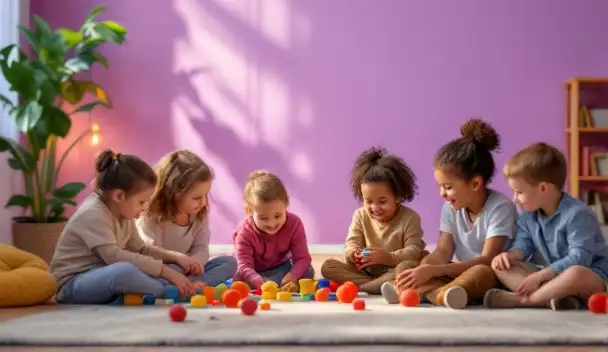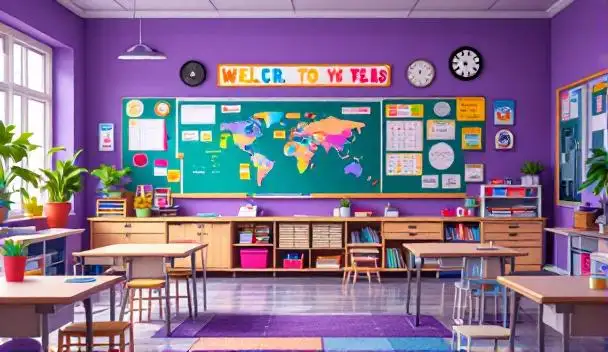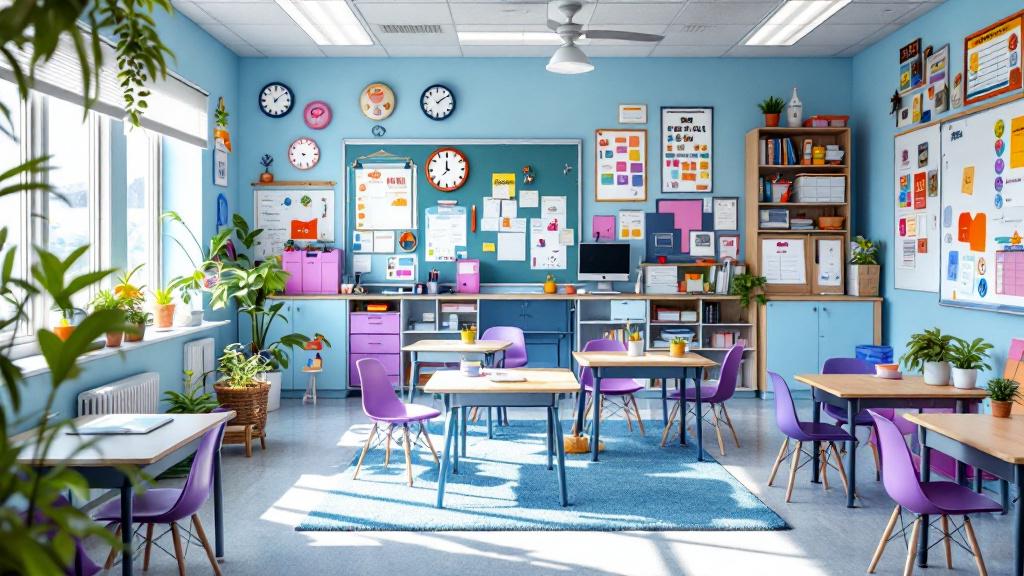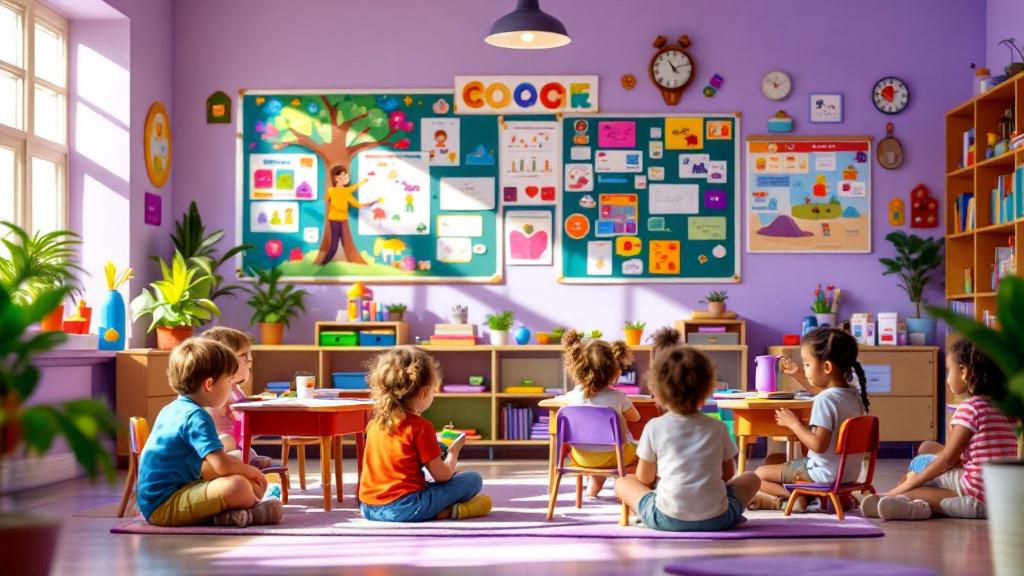Understanding How ABA Therapy Customizes Support for All Children with Autism
ABA therapy is a comprehensive, evidence-based approach that personalizes interventions to meet the unique communication needs of children with autism, whether they are verbal, nonverbal, or somewhere in between. By utilizing a combination of structured techniques, visual supports, and family involvement, ABA helps foster meaningful improvements in social communication, independence, and overall quality of life.
Personalized Assessment and Goal Setting in ABA Therapy
How is ABA therapy tailored to the needs of verbal and nonverbal children with autism?
ABA therapy begins with thorough assessments designed to understand each child's current skills, challenges, strengths, and interests. This initial step is vital in creating a customized treatment plan that targets the child's specific development goals.
For verbal children, therapy often focuses on enhancing existing language abilities through approaches like Verbal Behavior Therapy (VBT). VBT emphasizes building functional communication skills, such as requesting needs, describing objects, and participating in conversations using verbal or signed language. Therapists work on integrating natural language use into everyday routines and social interactions.
Nonverbal children, on the other hand, benefit from visual supports and alternative communication systems. Picture Exchange Communication Systems (PECS), visual schedules, communication boards, and speech-generating devices are commonly employed tools. These aids help children express their needs and thoughts, fostering independence and reducing frustration.
The development of individualized goals is central to effective ABA therapy. Goals are based on comprehensive assessments and are designed to improve communication, social skills, and independence. These goals often involve teaching specific language or social behaviors, reducing problematic behaviors, and increasing adaptive skills.
Therapists incorporate preferred activities, toys, and interests into sessions to maintain engagement. The programs are flexible, with strategies adapted for each child's developmental level and environment, whether in homes, clinics, or community settings.
In addition, family involvement is essential. Therapists train parents and caregivers on routines and reinforcement techniques, ensuring consistent application outside therapy sessions. This collaborative approach maximizes progress and encourages children to generalize skills across different contexts.
In summary, ABA therapy is highly personalized, combining meticulous assessments with tailored goals and supports that address each child's unique communication abilities and developmental needs. This individualized approach promotes meaningful progress, fostering greater independence and social integration.
Strategies to Develop Communication Skills Across Verbal Abilities

What strategies are used in ABA therapy to develop communication skills in children with varying verbal abilities?
ABA therapy offers a range of tailored methods to help children improve their communication skills, whether they are nonverbal or have some verbal abilities. For children who already have some speech, therapists often use techniques such as modeling, prompting, and natural environment teaching. These methods encourage children to imitate sounds, words, or phrases, gradually raising their ability to communicate effectively.
Modeling involves demonstrating desired communication behaviors, while prompting provides cues to help children produce the correct response. Fading prompts over time allows children to become more independent in their communication. Natural environment teaching leverages everyday activities to create meaningful learning moments, making new skills more relevant and easier to generalize.
For children without verbal skills, augmentative and alternative communication (AAC) devices play a crucial role. These include picture exchange communication systems (PECS), speech-generating devices (SGDs), communication boards, and sign language. AAC tools help children express their needs and participate actively in social situations.
Structured teaching approaches like discrete trial training (DTT) support targeted skill acquisition in a consistent, systematic way. DTT involves repeated, controlled trials to reinforce specific communication responses. Incidental teaching and natural environment teaching incorporate learning into daily routines, making use of spontaneous opportunities to promote language development.
Throughout therapy, data collection and progress monitoring are essential. Therapists continuously track improvements and adjust strategies for optimal outcomes. Collaboration with families and speech-language professionals ensures that each child's communication plan remains individualized and effective, fostering noticeable progress in expressive and receptive language skills.
Customization of Verbal Behavior Therapy for Varied Communication Needs
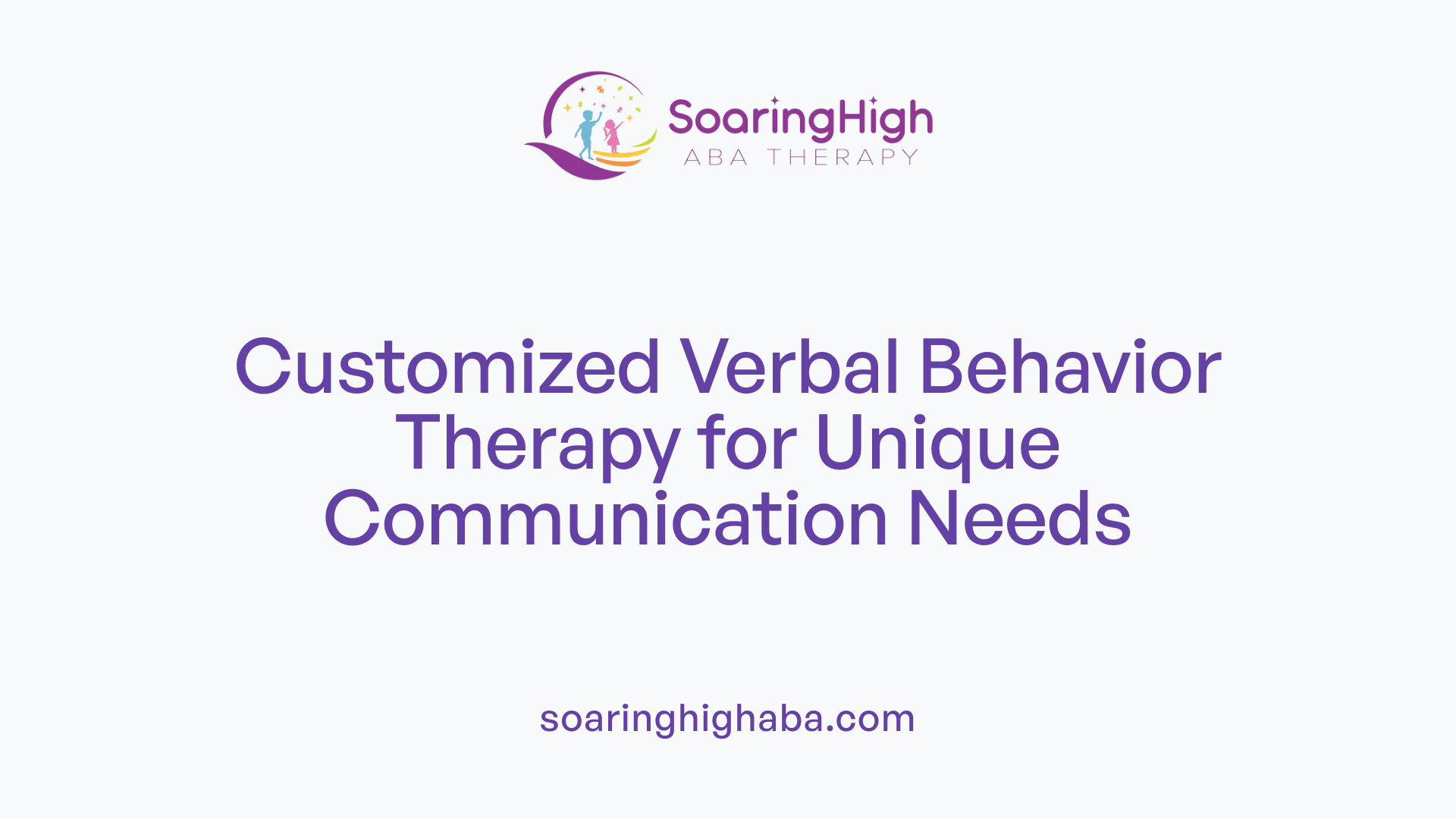 How can ABA therapy approaches like Verbal Behavior Therapy (VBT) be customized for verbal and nonverbal children?
How can ABA therapy approaches like Verbal Behavior Therapy (VBT) be customized for verbal and nonverbal children?
VBT's flexibility allows it to be tailored effectively to both verbal and nonverbal children. For children who already have some speech, therapy focuses on expanding their language use by targeting specific communication functions such as manding (asking for items), tacting (naming objects or actions), intraverbals (engaging in conversational exchanges), and echoics (repeating sounds or words).
In cases where children are nonverbal or minimally verbal, VBT introduces alternative communication methods like gestures, sign language, or assistive technologies such as augmentative and alternative communication (AAC) devices. These tools are customized to fit each child's preferences and developmental level, providing visual and functional support. For example, picture exchange communication systems (PECS) or speech-generating devices like Alex software enable children to express their needs effectively.
Incorporating parent training is crucial to reinforce these strategies across different environments, ensuring that the child's communication skills generalize beyond therapy sessions. This holistic approach helps build confidence and consistency in using these communication tools, leading to meaningful improvements in social interaction and independence.
By personalizing interventions and involving families, VBT can be an effective strategy in fostering communication regardless of a child's initial ability to speak, ultimately supporting their growth towards greater social and functional independence.
Goals, Methods, and Outcomes of ABA Therapy in Communication Development
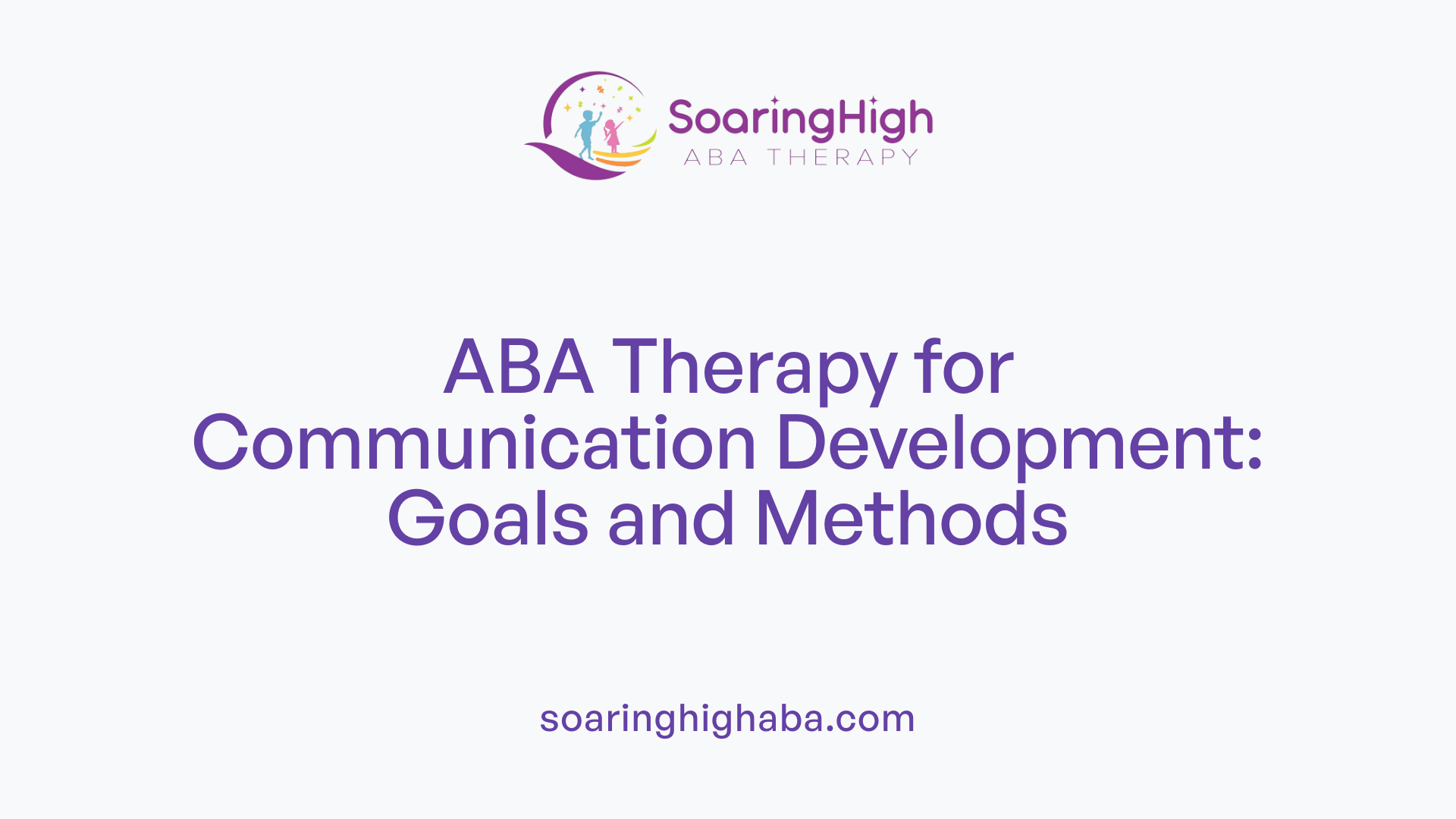
What are the goals and methods of ABA therapy in fostering communication development in children with autism?
ABA therapy aims to help children with autism improve their communication skills through clear and measurable objectives. These goals often include enabling children to request items, label objects and actions, follow directions, and interpret social cues such as gestures or facial expressions.
To achieve these goals, therapists employ various teaching methods. Prompting and modeling are used to guide children and demonstrate desired behaviors. Natural environment teaching involves incorporating learning into everyday situations, making the skills more functional and applicable. Discrete trial training, a common ABA technique, breaks down skills into small steps with repeat practice.
Visual supports, such as picture exchange communication systems (PECS), and communication devices are frequently integrated to aid children, especially those who are nonverbal. Positive reinforcement—like praise, preferred toys, or access to activities—encourages children to use their new skills regularly.
Data collection plays a vital role, with therapists monitoring progress and adjusting strategies to ensure goals are met effectively. Building foundational skills like attention and imitation is also essential, as these support the development of more complex communication behaviors.
Overall, ABA combines structured instruction with natural interactions, creating a versatile approach that increases language and social communication abilities. The ultimate aim is to enhance independence and improve quality of life for children with autism.
Supporting Children with Delayed Speech and Nonverbal Autism through ABA
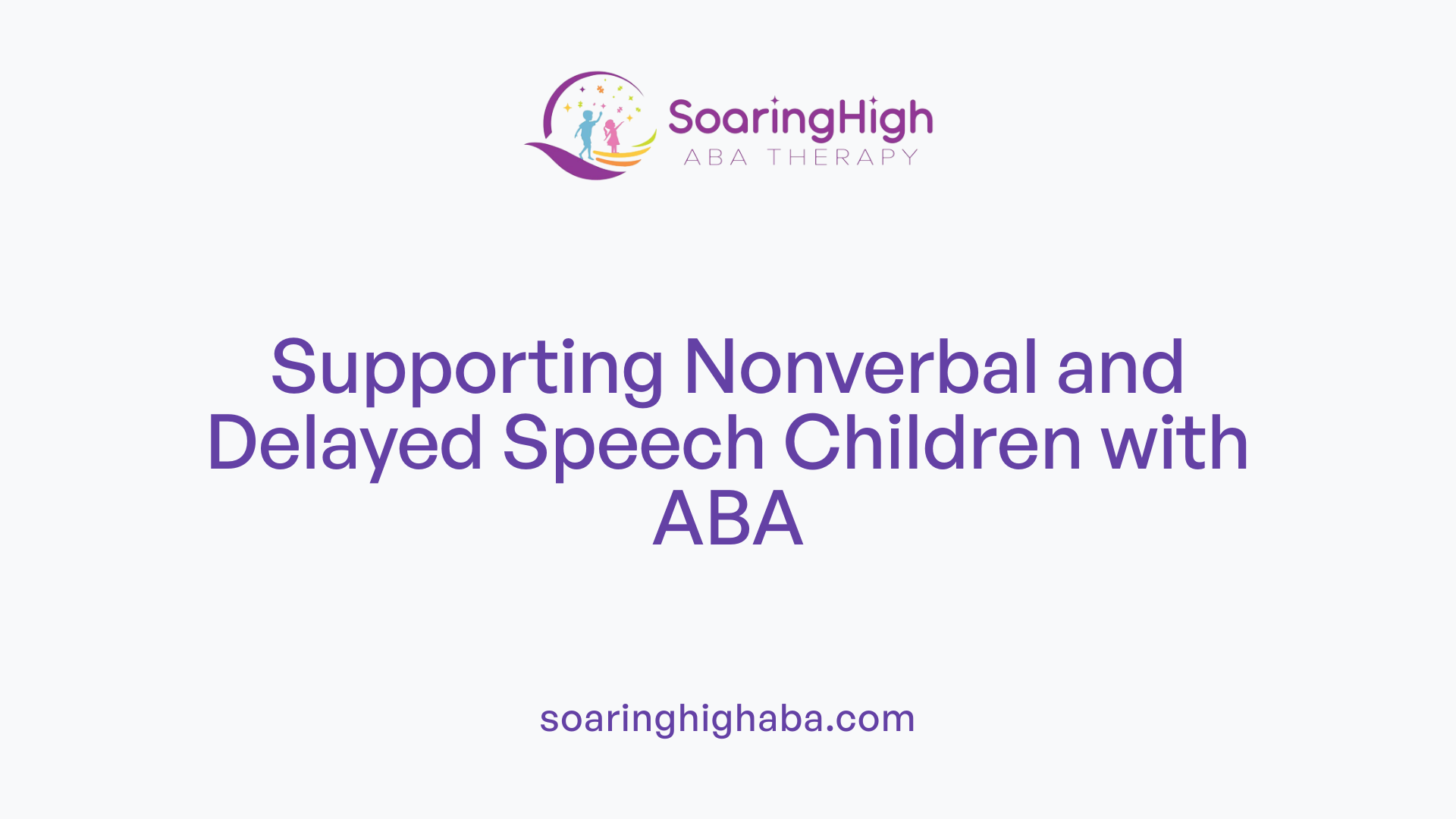 How does ABA therapy support children with delayed speech or nonverbal autism in developing communication skills?
How does ABA therapy support children with delayed speech or nonverbal autism in developing communication skills?
ABA therapy plays a vital role in helping children with delayed speech or nonverbal autism develop effective communication skills. Central to this support is Verbal Behavior Therapy (VBT), which is based on behavioral principles articulated by B.F. Skinner. VBT classifies language into functional units called verbal operants—such as mand (requests), tact (naming objects), intraverbal (conversational responses), and echoic (repetition). Therapists use these categories to target specific communication goals, helping children understand that language can be used to obtain desired outcomes.
In addition to VBT, ABA employs augmentative and alternative communication (AAC) tools, such as picture exchange systems (PECS) and speech-generating devices. These tools are invaluable for nonvocal children, offering systematic ways to express needs and thoughts. For example, a child might select a picture of food to indicate hunger or use a speech device to request a preferred toy.
Effective strategies include modeling, prompting, and natural environment teaching. Modeling involves demonstrating correct communication behaviors, while prompting guides children to imitate these behaviors. Natural environment teaching integrates learning into everyday routines, making communication practice relevant and engaging.
Reinforcement is a cornerstone of ABA, where positive outcomes are immediately provided when children exhibit desired behaviors—like saying a word or reaching for a device—which encourages repeated use. This approach not only improves vocabulary but also enhances social interactions and independence.
ABA therapy also considers sensory sensitivities and behavioral challenges that may hinder communication. By creating a supportive environment, therapists help children manage sensitivities and behavioral issues, making learning more effective. This tailored approach promotes spontaneous speech, encourages initiation, and fosters social engagement, ultimately supporting children in becoming more expressive and confident communicators.
Effectiveness and Outcomes of ABA Strategies in Communication Improvement
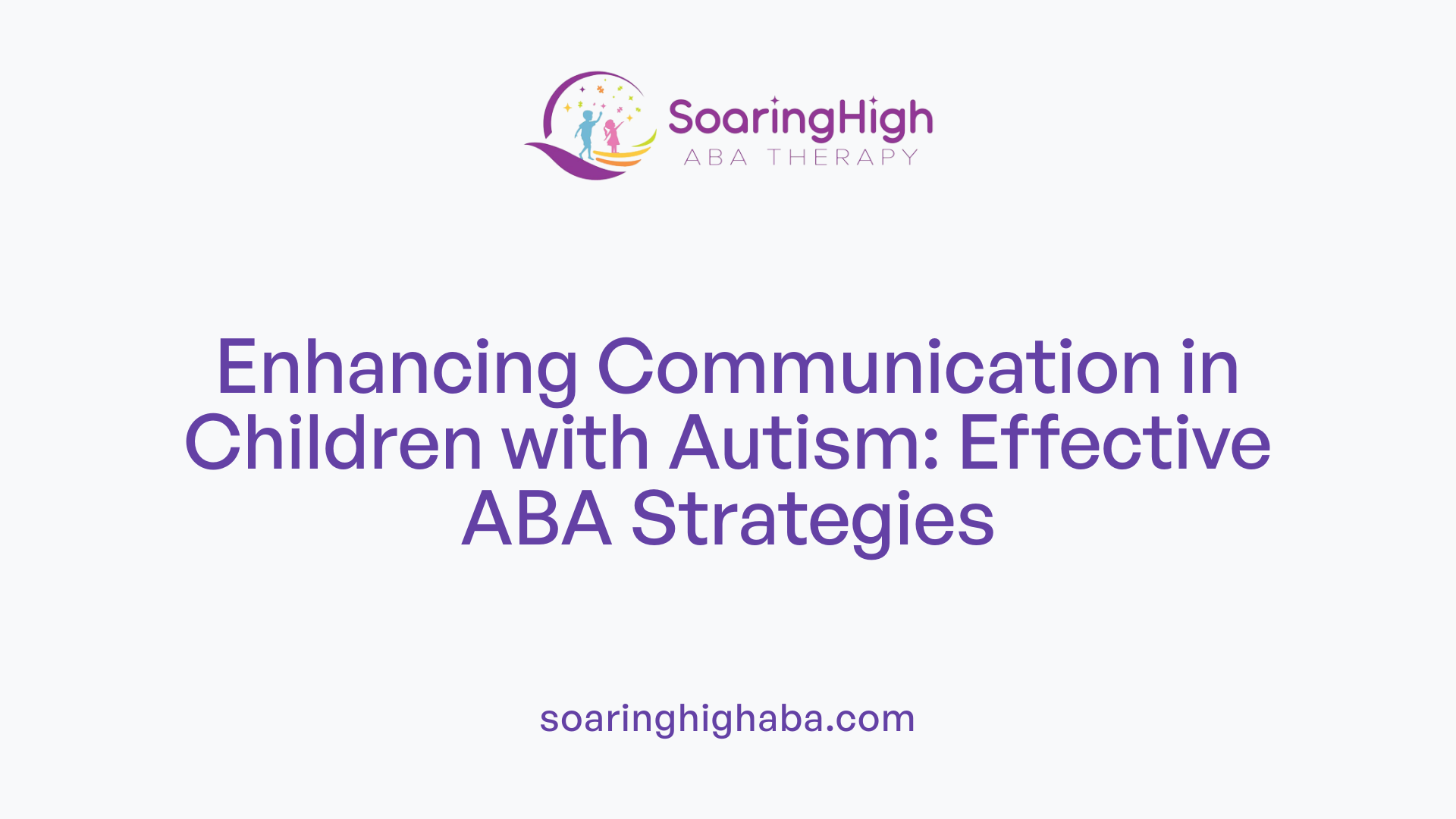 Research consistently shows that ABA strategies significantly enhance both verbal and nonverbal communication skills in children with autism spectrum disorder (ASD). These evidence-based techniques include positive reinforcement, verbal behavior therapy (VBT), and natural environment teaching, all geared toward fostering functional and meaningful communication.
Research consistently shows that ABA strategies significantly enhance both verbal and nonverbal communication skills in children with autism spectrum disorder (ASD). These evidence-based techniques include positive reinforcement, verbal behavior therapy (VBT), and natural environment teaching, all geared toward fostering functional and meaningful communication.
Studies and meta-analyses support the effectiveness of ABA, reporting large or moderate improvements in receptive and expressive language abilities. Many children demonstrate noticeable gains in requesting, labeling, and engaging in social interactions. Success stories abound — children who initially could not express basic needs now use specialized communication tools like PECS or sign language to share their thoughts and feelings.
Individualized ABA programs, tailored to each child's unique strengths and challenges, are crucial for success. When these programs involve intensive therapy—often 1-3 hours weekly—and include regular progress tracking with tools like the VB-MAPP, children tend to show meaningful advances in communication.
Overall, the research endorses ABA as a top-tier, evidence-based approach that improves communication skills effectively and sustainably for children with autism, helping them gain independence and connect better with their environment.
Transforming Lives with Personalized ABA Interventions
ABA therapy's tailored strategies—ranging from assessment-driven planning to intensive, naturalistic teaching methods—have proven highly effective in unlocking communication potential in children with autism. By addressing each child's unique needs, whether they are verbal, nonverbal, or somewhere in between, ABA practitioners help foster essential skills that significantly enhance social integration and independence. As research continues to affirm its efficacy, ABA remains a cornerstone in the journey towards meaningful communication and improved quality of life for children with autism and their families.
References
- Empowering Non-Verbal Children With ABA Therapy In South Florida
- What is Verbal Behavior Therapy? - Autism Parenting Magazine
- What is ABA Therapy | Behavioral Framework
- 5 Verbal Behavior Techniques to Help Your Child | ABA Therapy
- ABA Therapy Strategies For Nonvocal Children
- Applied Behavior Analysis (ABA) | Autism Speaks
- Visual Supports for Non-Verbal Children in ABA Therapy
- How Custom ABA Therapy at Home Supports Your Child's Growth
- Applied Behavior Analysis (ABA) | Autism Speaks
- How ABA Therapy Can Improve Communication Skills in Children
















































